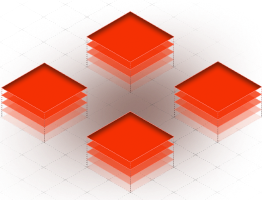Vapor: Multi-level Subdomains
Vapor has always made it straightforward to deploy your application to a custom domain, subdomain, or even wildcard subdomain. However, it’s only been possible to utilize single-level subdomains - meaning it was possible to deploy your application to `api.example.com`, but not `v1.api.example.com` or `staging.v1.example.com`. Today, we’re thrilled to announce support for multi-level subdomains on Vapor. To take advantage of this feature, first, ensure the root domain is added as a domain to Vapor. This can be done either directly from the Vapor dashboard or by using the Vapor CLI: ```bash vapor domain example.com ``` Once the domain has been added, you must request a certificate. Wildcard certificates provided by AWS Certificate Manager can only protect single-level subdomains, so to protect a multi-level subdomain, the subdomain must be explicitly added to the certificate. When requesting a certificate from the Vapor dashboard, you may explicitly add the multi-level subdomain by either adding it as the “Domain Name” or any of the “Alternative Names”.  Alternatively, you may request the certificate from the Vapor CLI: ```bash vapor cert my.really.long.multi.level.subdomain.laravelvapor.rocks ``` When the certificate has been issued, you can add the multi-level subdomain to the domain section of your `vapor.yml` file and carry out a full deployment using the Vapor CLI. As previously discussed, wildcard certificates cannot protect multi-level subdomains, so the multi-level subdomain must be explicitly defined in the `vapor.yml` file - relying on wildcard subdomains is not possible. ```yml id: 12345 name: vapor-rocks environments: production: domain: my.really.long.multi.level.subdomain.laravelvapor.rocks build: - 'composer install --no-dev' ``` Vapor will automatically find the correct certificate to protect the multi-level subdomain and attach it to your environment, regardless of whether you use API Gateway v1, API Gateway v2, or a load balancer. That's it! Assuming you are using Vapor to manage your DNS, your application will be available via your multi-level subdomain when the deployment completes. We hope you enjoy using this new feature of Vapor and look forward to hearing any feedback you may have!
Joe Dixon





